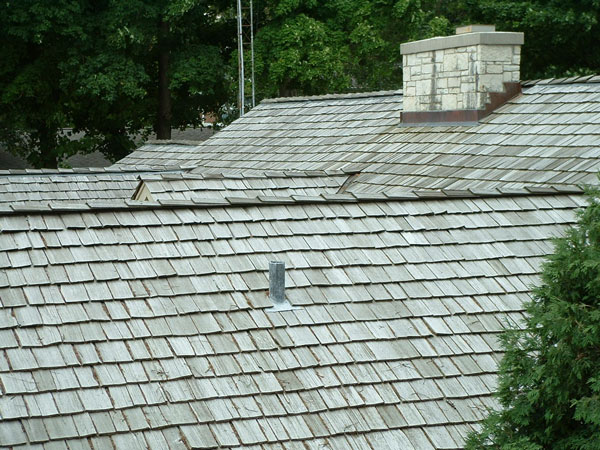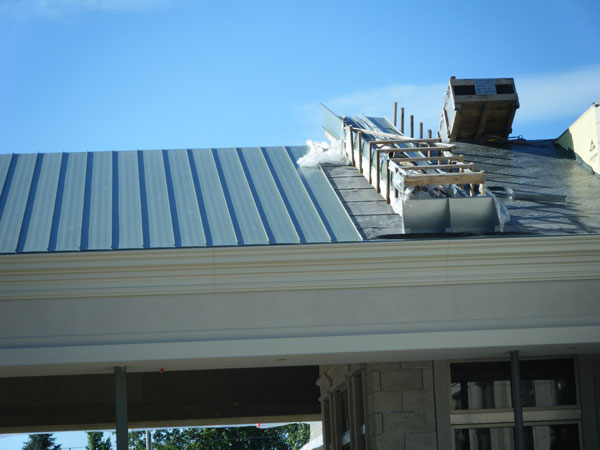By Gregory Havel
The ideal roof covering is difficult to ignite. This concept was proven in past centuries during conflagrations, when embers rose on the thermal column, were carried on the wind, fell onto roofs at a distance, and ignited those that were combustible.
Fire ratings for roof coverings are tested by ASTM E-108, UL 790, and National Fire Protection Association (NFPA) 276, Standard Method of Fire Test for Determining the Heat Release Rate of Roofing Assemblies with Combustible Above-Deck Roofing Components, 2011 Edition. These standards classify roof coverings as Class A, Class B, Class C, or “unrated” based on their ability to:
- resist the spread of fire into the attic;
- resist flame spread on the roof covering; and
- resist the generation of burning embers.
Class A roof coverings are noncombustible like tile, metal, and slate. An example of a Class B roof covering is fire retardant-treated wood shingles. An example of an “unrated” roof covering is plain wood shingles. However, a Class B roof covering may receive a Class A rating if it is installed as part of a system that includes additional fire-resistive elements in the assembly. These four classes of roof coverings are incorporated into most building and some fire codes, and are usually noted on the manufacturers’ literature and materials labels.
Please note that the Class A, B, and C ratings for roof coverings are related neither to the Class A, B, and C flame spread/smoke developed ratings of ASTM E-84/UL 723; nor to the hourly fire-resistance ratings of structural assemblies of ASTM E-119.

(1)

(2)

(3)

(4)
Pitched roofs can be finished with a variety of roof coverings. These include:
- Wood shingles (photo 1) are combustible, but can be treated at the mill with fire-retardant chemicals. However, the fire-retardant properties of these chemicals become less effective with weathering, and can be overcome if the shingles are painted or stained.
- Asphalt shingles or roll roofing are made of asphalt with natural fiber or glass fiber felt and are combustible. These are surfaced with mineral grit (like sand) to give them color and to make the surface less ignitable.
- Tile roofs (photo 2) are made of overlapping and interlocking terra cotta or concrete tiles, which are not combustible. Tile roofs provide precarious footing when intact, and become slippery when wet, and impossible when covered with broken pieces of tile that were removed for ventilation.
- Slate roofs (photo 3) are made of overlapping slates: noncombustible natural stone that has been split into thin layers to make roofing materials. These roofs provide precarious footing when intact and become slippery when wet or covered with moss; they become impossible when covered with broken pieces of slate that were removed for ventilation.
- Metal roofs (photo 4) are noncombustible and can often be cut with an ax or power saw at the same time as the wood-roof sheathing to which they are usually attached for vertical ventilation. They provide precarious footing when intact and become slippery when wet. Metal roofing materials are sometimes applied over other types of original roofing materials when they have reached the end of their effective life.
Both wood and asphalt shingles and the wood-roof sheathing to which they are attached are easy to cut with an ax or power saw, making vertical ventilation an option in structures with these types of roofs.
Slates and tiles are difficult to cut with an ax or power saw. They must be broken with a maul or an ax for access to the wood-roof sheathing to which they are usually attached, for vertical ventilation. Slates and tiles are much heavier than wood or asphalt shingles or metal roofs, and the supporting structure must be designed and built to support this weight (dead load).
Some modern roofing materials look like one of the traditional materials from the ground but are not the same. Examples are the large steel, aluminum, or plastic panels that are colored and formed to the shape of wood shingles, tiles, or slates. These panels interlock and are attached to the roof sheathing.
The type of roofing material, type of roof sheathing, and type of roof supports (rafters or trusses), are important notes for our preincident plan for any structure. If you do not have a preincident plan for the structure, assume that the roof is manufactured wood supported by trusses or I-joists and that the roof covering will be difficult to cut or break. In any case, vertical ventilation of most pitched roofs today is most safely done from an aerial ladder or platform, rather than from the roof or a roof ladder. Horizontal ventilation of attics and truss lofts by opening both gable ends is also an option.
Search the Internet for “metal roofing materials” and “plastic roofing materials” for manufacturer information on a variety of these products.
Download this article as a PDF HERE.
 Gregory Havel is a member of the Town of Burlington (WI) Fire Department; retired deputy chief and training officer; and a 30-year veteran of the fire service. He is a Wisconsin-certified fire instructor II, fire officer II, and fire inspector; an adjunct instructor in fire service programs at Gateway Technical College; and safety director for Scherrer Construction Co., Inc. Havel has a bachelor’s degree from St. Norbert College; has more than 30 years of experience in facilities management and building construction; and has presented classes at FDIC.
Gregory Havel is a member of the Town of Burlington (WI) Fire Department; retired deputy chief and training officer; and a 30-year veteran of the fire service. He is a Wisconsin-certified fire instructor II, fire officer II, and fire inspector; an adjunct instructor in fire service programs at Gateway Technical College; and safety director for Scherrer Construction Co., Inc. Havel has a bachelor’s degree from St. Norbert College; has more than 30 years of experience in facilities management and building construction; and has presented classes at FDIC.
MORE CONSTRUCTION CONCERNS

